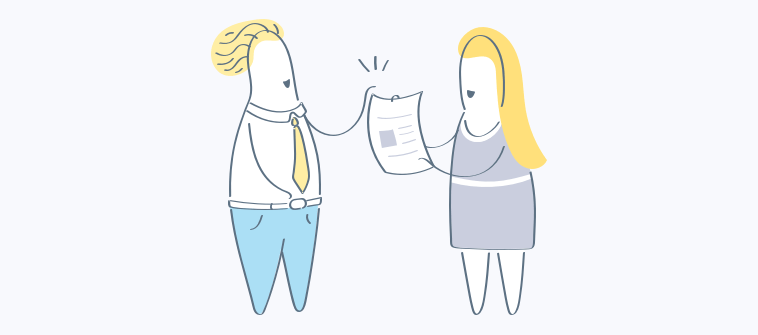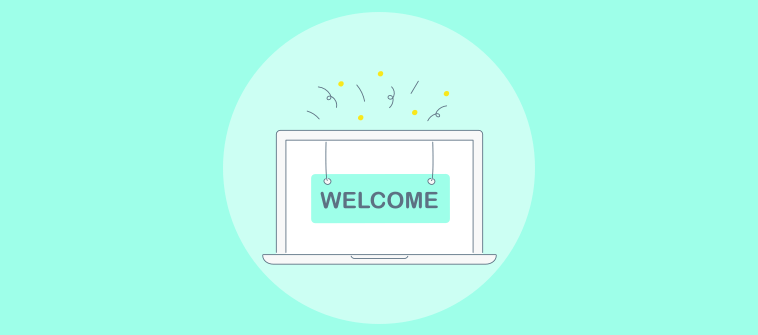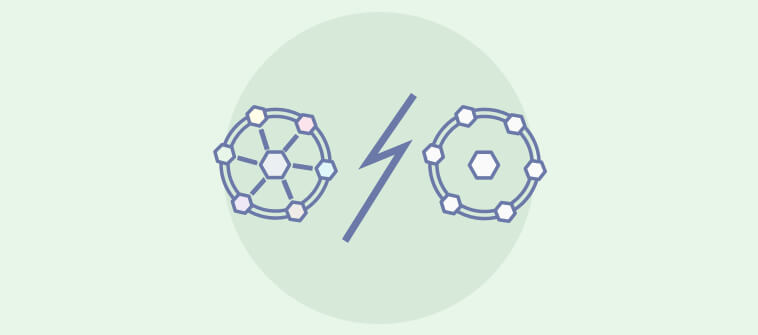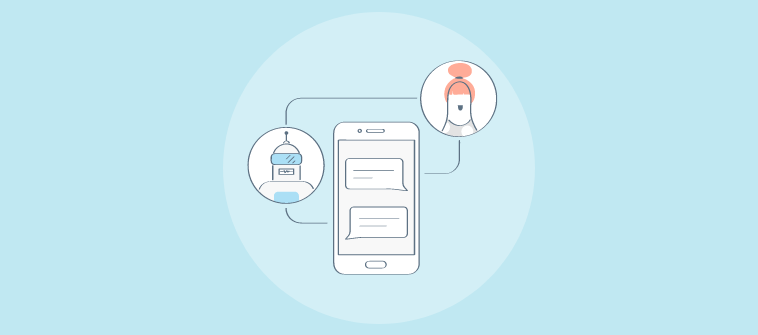
What would you prefer – being greeted like an honored guest while entering a store or just another visitor that needs to be convinced to make a purchase?
Honestly, it can get annoying when you come across pushy sales representatives during your buyer’s journey who treat you like a sales target that needs to be acquired at any cost.
Understand that not all your buyers journey end up converting into customers. Not all of them plan to make a purchase from you. Some may come looking for information or want to compare your product with one of your competitors. It’s wrong to assume that every prospective buyer is going to convert into a customer immediately. While some customers purchase instantly, a majority of them take their own sweet time during their own customer purchase journey.
That’s why you can’t treat curious buyers the same way as you’d treat customers with a strong conviction to purchase. Focus on what information your prospective buyer seeks and help them find it at strategic moments in their journey. This is the buyer’s journey.
To help you move in the right direction, this post will cover what is the buyer’s journey, why it matters, and what are the stages of the buyer’s journey. Let’s get started.
What is the Buyer’s Journey?
The buyer’s journey is an active research process that enables a buyer to become aware of a certain product or service, consider and evaluate its worth and decide whether it needs to be purchased or not.
It is said that sixty-seven percent of the buyer’s ‘decision’ is complete before a buyer even reaches out to sales.
Now that you understand what the buyer’s journey is, your aim going forward should be to meet them when they seek more information about your offerings. Supply buyers the necessary information through your content that gently nudges them to arrive at the right decision.
Why Does the Buyer’s Journey Matter?
Why is it important for your business to work towards a buyer’s journey?
At every stage of this journey, you offer them the information that brings them closer to making a purchase decision. In short, you are nurturing them through every piece of information they seek during the customer buying journey.
Here you aren’t imposing a sales pitch but rather giving your buyers a direction to move ahead through expert guidance. They’ll remember that you offered guidance during a conversation or directed them towards a piece of content that helped them overcome a problem faster.
Such actions help you create a favorable outlook and build trust with buyers. And thanks to these efforts, you increase the possibility of converting them into a customer later on.
That’s why the buyer’s journey matters.
What are the Different Stages of the Buyer’s Journey?
If you’ve been wondering about what are the stages of the buyer’s journey, then you’ll notice them in this section. There are three buyer’s journey stages in total. Let’s explore every stage in detail below.
1. Awareness Stage
Awareness stage is where the buying journey begins. It is also seen as the top of the funnel (TOFU) where the buyer is more eager to find relevant information that resolves a concern or problem faster.
Under the awareness stage, you are responsible for:
- Acquiring new visitors
- Segmenting these new visitors on the basis of information acquired
- Working towards company branding initiatives that make you more visible and drives in a favorable perception
While a buyer walks through the awareness stage, your sales team needs to remember that this is not where they have to pitch to them.
This is where the sales team needs to:
- Answer buyer’s questions
- Troubleshoot any confusions
- Inform how your services simplify their challenges
To make sure your efforts are reaping benefits, track metrics such as number of new visitors, percentage of new visitors vs. overall visitors, and number of new direct visitors.
Remember: At this stage of the buyer journey there are two things your buyer is unaware of: the solution they’d need to solve their problem and your brand. With your efforts to build awareness, the buyers will get to know who you are and how your solution can help them.
2. Consideration Stage
The consideration stage, also known as the middle of the funnel (MOFU), is where the buyer starts considering the short-listed options and researches them again. During their research, buyers try to delve deeper into a company’s offerings and see how it is more effective in comparison to others in addressing a specific pain point.
70% of buyers return to Google at least 2-3 times during the course of their research, diving even deeper into each company’s specific offerings to see how they can address their particular pain points.
As one of the buyer’s journey map stages, consideration is where you also need to make sure that your goals align with that of your buyers.
And while you help them evaluate their options, you also need to focus on:
- Building relationships that encourage your buyers to visit your site again
- Capturing vital information like email address and other contact information that gets stored in your leads database
- Building a strong presence on social media channels to nurture your buyers and prospects
To make sure your efforts are reflecting expected results, track metrics such as:
- New leads generated
- Returning direct visitors
- Visitor recency
Remember: At this stage, your buyers will start in-depth research and start comparing you to other vendors that they may be considering. They may end reaching out to your business for personalized product or service demonstrations. This helps them drill down what features set you apart from others. So make sure you highlight them without sounding salesy.
3. Decision Stage
Decision stage, also known as the bottom of the funnel (BOFU), is where the buyer is ready to select a vendor and make a purchase. During this buyer journey mapping stage, they’ll think about product implementation and the start cost.
So, their primary concerns could be:
- Is the product cost within my budget?
- Will the product implementation time work with my schedule?
- Is the product easy to use or will the team need specific training?
As you help your leads get answers to these questions and walk through the decision stage, you are also required to focus on:
- Maximizing the funnel conversions by constantly engaging with your leads using live chat to ensure they leave as your customers
- Working towards your goal to convert the lead into a customer
- Improving initial conversion value by identifying the upsell opportunities and offering product recommendations that will further enhance the buyer’s experience
And while you focus on these important tasks, make sure to track your efforts through the following metrics for this buyer journey stage:
- Cumulative conversion rate for funnels
- Days to conversion
- Revenue per visit
Remember: At this stage, the buyer is ready to become a customer by purchasing a product that resolves their pain point. Also, when they are ready to use your product, they’ll be looking into best practices or ways to implement the product that reaps more results. So make sure you’re ready with the educational content that helps them use your product seamlessly.
How to Create Content for Each Stage of the Buyer’s Journey
To nurture your buyers at every stage, it is important to have the right type of content that pulls their attention back to your brand. And keeping that in mind, we’ll discuss different content pieces you should create as you start buyer journey mapping and various ways that will help you nudge buyers towards your brand.
Let’s get started.
1. Content for the Awareness Stage
In the awareness stage, your buyer has arrived at the realization that they are facing a challenge and how they should know more about it.
That means, you need to work on the type of content that discusses their challenge in detail and drives them to seek a solution.
For example at ProProfs, we try to address challenges and work through the awareness stage with educational blog articles for our b2b buyer journey.

Our aim with these articles is not to market ourselves as a brand or as a service provider but help out businesses find a solution relevant to their pain point. In fact, blogs are one of the most common forms of awareness stage content. But we haven’t restricted them to the top of the funnel. We use them for other stages as well.
Besides blogs, we also create infographics that instantly capture the buyer’s attention and keep them engaged.
And unlike blogs, infographics are easy to consume and share with others. In a matter of seconds, buyers can easily pull out relevant information rather than scrolling through a detailed content piece. Also, when shared with others on social media platforms, infographics tend to capture more attention.
But that’s not all we do at the awareness stage. We even create and promote videos that can help businesses address a problem faster.
We all know how videos have become an easier way for buyers to consume more content and not feel fatigued of grasping more information. Besides these engaging avenues for information, we also try to use our own product line to spread awareness during the b2b buying journey.
We’ve understood how we can use ProProfs Live Chat to create awareness among our B2B buyer journey.
With a live chat feature like Announcement, we’ve not only found another way of engaging with our visitors but also help them learn what’s new. We display information on a possible solution that they should check out and make use of.
2. Content for the Consideration & Evaluation Stage
Your efforts towards the awareness stage never go to waste. By the time the buyer journey reaches the consideration stage, they get a clear understanding of their pain point and the subsequent opportunities.
Taking their mindset into consideration, you’ll have to plan your content and engagement strategies accordingly.
No doubt, that blogs would be a part of this stage as well. But when you try to cover blogs for the consideration phase, make sure they state the comparisons between your competitors and you in detail. That’s because the buyer is weighing the existing options and which one would save them the most time, money and efforts.
Besides blogs, we’d recommend creating downloadable content such as templates, eBooks.
These can help your buyers transition from awareness to consideration stage. What’s more, you can link landing pages in the eBook to bring buyers one step closer to becoming customers.
We’d also recommend that you give comparison videos that explain your offering and comparisons a shot. They are a great way to answer lingering questions that a buyer may have and encourage them to take the next step – arriving at a decision.
However, when a buyer is considering a service or an opportunity, you need to make sure that they actively engage with your brand too. While these content pieces are sure to prompt buyers into taking action, you could also give webinars a try. Or for that matter, the use of live chat.
With live chat real-time monitoring feature, you can track returning visitors and compare their previous browsing data with the current one to understand what they are particularly interested in during the buyer journey mapping process.

This will help your sales representatives to initiate conversations at strategic moments that may result in conversions. But active engagement with buyers gives you the opportunity to drive your point in the right direction. And rather than sounding all salesy, you get a chance to offer data that helps buyers make a decision faster.
3. Content for the Decision Stage
The decision stage, being the last stop of the buyer’s journey, is crucial for your business. This is where the buyer will evaluate your worth on the basis of your position in the market.
For this particular stage, we’d recommend you to create content from two different angles.
The first angle being your reputation as a brand amidst your existing customers.
Here you need to focus on creating case studies that explain the experience of your previous or existing customers in detail. You need to show:
- What challenges your customers faced?
- How your product solved their challenges?
- The positive end result
The case study helps your buyers understand how your solution can end up helping them and at what scale. This will enable buyers to make data driven decisions.
For the second angle, you need to think about those who make a decision and opt for your solution. For them, you’ll have to create a different type of content that focuses on generating blog pieces, videos and a knowledge repository that helps your buyers (now customers) to implement the solution faster.
For example, we’ve created a separate knowledge repository for all our product lines. They help us address common concerns related to the product and how our product features can enable users to create delightful customer experiences.

The reason for creating such content is that customers even after onboarding research for best practices and implementation guides.
So, to make sure you do not fall short on meeting customer expectations, make sure to cover content from both these angles.
How to Use Live Chat Software for the Buyer Journey
Now that you’re ready with the content strategy for the entire buyer’s journey, it is time that we think of proactive ways in which you can engage and help buyers arrive at a decision faster. To help you with this, live chat software would be the perfect platform for you to engage and enable buyers to make a decision faster. Let’s understand this better below.
1. Enables You to Capture Qualified Leads
It is important for your sales operators to distinguish between normal visitors and qualified leads before targeting them for conversion purposes. With the help of live chat, you can capture market and sales qualified leads for your business, therefore helping the sales team target the right audience for conversion purposes.
2. Send Proactive Messages for Instant Engagement
Live chat also helps your brand to intervene during a visitor’s browsing experience with the help of proactive messages. This form of instant engagement helps your business understand what led the buyer to your website and were they able to find what they were looking for.
3. Helps Sales Teams Educate Buyers in Real-time
While instant engagement through proactive messages is a great way to interact and know your buyers, letting them reach out to you for support is also something that you should wait for at times. If they are willingly approaching your business for support, then it seems as if they are looking for particular information urgently. This is the perfect opportunity for the sales team to offer the needed information and educate the buyers further about the company and what else it can offer them.
Harness the Power of Buyer’s Journey
If you really wish to create an awesome experience for your prospective buyers, then treat them like an honored guest.
Be more welcoming and offer them the help/information that assists them to arrive at a decision hassle-free. You need to have the right content in place at every stage that educates your prospective buyers about the kind of solution they need, how it can help them and where they can find it.
And while your prospective buyers walk through different stages of their journey with the right content pieces, make sure your sales reps are on stand by and intervene when they know it is the right time to pitch a sales idea. It would feel more organic for the buyer and may encourage them to make a purchase at their own pace.
Remember your end goal isn’t about making a sale happen but also leaving an impression that prompts such buyers to visit you again. That’s why it is important you learn the art of harnessing the power of a buyer’s journey.
Now that we’ve understood all about the buyer’s journey and its different stages, let’s take a look at some of the frequently asked questions below.
What makes a successful buyer’s journey?
The ability to constantly stay in touch with your customers and consistent reminders about your products can help them address their pain point or need can help you create a successful buyer’s journey. Besides that, you need to make sure you attract them with the right set of content strategies at different stages of their journey with your brand to convert them from being a buyer to a customer.
In which stage of the buyer’s journey leads usually in?
During the awareness stage itself, you’ll notice a lot of leads coming in. That’s because the awareness stage isn’t just about a buyer identifying a problem and finding a solution for it. It also involves looking out for possible solutions that are likely to help them overcome the pain point.
What is the difference between ideal customer profiles and buyer personas?
Ideal customer profiles are mostly used by B2B sales and marketing teams. They use them to broadly describe the target market and existing customers.
Buyer personas are used by sales teams who directly sell to a company’s customers. This term is used by sales teams to define a specific sort of audience in the market. Buyer personas are created on the basis of your collected leads and prospects data.
What is the difference between active and passive buyers?
Active buyers are prospects or leads that have already entered the buyer’s journey.
Passive buyers are those who haven’t started their journey with a brand that’s because they know they have a problem but it isn’t big enough for them to look for a solution.
What is the difference between customer journey and buyer journey?
Buyers journey is where a company continuously works towards helping a prospect become a customer. They create various content strategies that lead to the purchase.
Customer journey is where you focus on developing relationships with your customers by engaging them regularly with your brand.
Do you want a free Live Chat software?
We have the #1 Online Live Chat Software for instant customer support 24x7







